The Latin America Community group is designed to create a dedicated regional hub within WILDLABS, where conservationists and technology enthusiasts from Latin America can come together to share knowledge, collaborate on projects, and build networks that support conservation efforts across the region.
This group is for individuals working in or passionate about conservation technology across Latin America. From researchers, conservationists, tech developers, policy-makers or just people starting in the field, this community welcomes everyone interested in advancing conservation technology in the region.
A primary challenge faced by the Latin American conservation tech community is a lack of cohesive networking and communication channels specific to the region. The large geographic distances, and the varying levels of access to resources have made it difficult for people to connect and collaborate effectively. This group aims to address these issues by providing a central space where members can connect, find peers with similar interests, communicate more seamlessly, share resources, and build networks. It also encourages cross-border collaboration and helps bridge the gap between those with access to technology, knowledge and resources and those in need of them.
--------------------------------------------------------------------------------------------------------------------------------------------------------------------------------------------------------------------
El grupo de la Comunidad de América Latina está diseñado para crear un centro regional dedicado dentro de WILDLABS, donde conservacionistas y entusiastas de la tecnología de América Latina puedan reunirse para compartir conocimientos, colaborar en proyectos y construir redes que apoyen los esfuerzos de conservación en toda la región.
Este grupo está dirigido a personas que trabajan o sienten pasión por la tecnología para la conservación en América Latina. Desde investigadores, conservacionistas, desarrolladores de tecnología, formuladores de políticas, hasta personas que recién comienzan en el campo, esta comunidad da la bienvenida a todos aquellos interesados en avanzar la tecnología para la conservación en la región.
Uno de los principales desafíos que enfrenta la comunidad de tecnología para la conservación en América Latina es la falta de redes de comunicación y canales de colaboración cohesivos específicos para la región. Las grandes distancias geográficas y los diferentes niveles de acceso a recursos, a menudo dificultad que las personas se conecten y colaboren de manera efectiva. Este grupo busca abordar estos problemas proporcionando un espacio central donde los miembros puedan conectarse, encontrar colegas con intereses similares, comunicarse de manera más fluida, compartir recursos y construir redes. También fomenta la colaboración sin fronteras y ayuda a cerrar la brecha entre quienes tienen acceso a tecnología, conocimientos y recursos, y quienes los necesitan.
Community Guidelines
When participating in this group, either through commenting or posting, please post and/or comment in both Spanish (or Portuguese) and English.
Image Credit: Banco de Imágenes del Instituto Humboldt
Group curators
- @jsulloa
- | He/Him
Instituto Humboldt & Red Ecoacústica Colombiana
Scientist and engineer developing smart tools for ecology and biodiversity conservation.



- 3 Resources
- 22 Discussions
- 7 Groups
WILDLABS & Wildlife Conservation Society (WCS)
I'm the Bioacoustics Research Analyst at WILDLABS. I'm a marine biologist with particular interest in the acoustics behavior of cetaceans. I'm also a backend web developer, hoping to use technology to improve wildlife conservation efforts.





- 41 Resources
- 38 Discussions
- 33 Groups
No showcases have been added to this group yet.
- @pedrolv
- | He/Him
MSc Marine Biological Resources
- 0 Resources
- 0 Discussions
- 1 Groups
- @jfruizmu
- | he, him, his
Assistant Professor at the Universidad Nacional de Colombia. Research in applied machine learning, computer vision and bioacoustics
- 0 Resources
- 0 Discussions
- 1 Groups
- @gabyavm97
- | She/her
Gabriela A. Valencia-Macias, B.Sc. (Universidad Veracruzana), is achieving a master's degree in science at the Ecology Institute (INECOL A.C). She is Colombian-Mexican and has focused her studies on the conservation and biodiversity of amphibians.
- 0 Resources
- 0 Discussions
- 2 Groups
- @briannajohns
- | she/they
Gathering for Open Science Hardware (GOSH)
Interested in the application of open source technologies for conservation research.



- 9 Resources
- 5 Discussions
- 4 Groups
conservation biologist working primarily in Argentina
- 0 Resources
- 1 Discussions
- 4 Groups
Para la Naturaleza
- 0 Resources
- 0 Discussions
- 1 Groups
- @quinteroossa
- | She/her
- 0 Resources
- 0 Discussions
- 1 Groups
Andigena ID+ es una empresa Colombiana dedicada a promover la conservación de la biodiversidad de manera integral a través de la investigación y el desarrollo.
- 0 Resources
- 0 Discussions
- 5 Groups
University of Suffolk
Researcher on the 8 Primates Project
PhD student- biodiversity monitoring using acoustic data


- 0 Resources
- 2 Discussions
- 9 Groups
- @veronicapmc
- | she/her/ella
I'm an Environmental Biology graduate from Columbia University with a passion for wildlife science, ecology, and conservation biology. I'm an early-career professional looking to get into the field of conservation technology and interested in related graduate programs.
- 0 Resources
- 1 Discussions
- 7 Groups
- @linaquiceno
- | she/her

- 0 Resources
- 0 Discussions
- 2 Groups
- @Jesulich
- | she/her
I am a Venezuelan marine biologist working as a marine mammal observer and passive acoustic monitoring operator in Argentina.
- 0 Resources
- 1 Discussions
- 1 Groups
Un ambicioso proyecto internacional está usando transmisores satelitales para monitorear los viajes migratorios de ballenas francas australes, permitiendo entender sus sorprendentes patrones de desplazamiento en tiempo...
7 August 2025
Una misión pionera para conocer y proteger las profundidades del talud argentino // A pioneering mission to explore and protect the depths of the Argentine continental slope
31 July 2025
El Instituto Humboldt está buscando un(a) Desarrollador(a) de Inteligencia Artificial que quiera aplicar su experiencia en Python y procesamiento de lenguaje natural para proteger la biodiversidad.
25 July 2025
In this case, you’ll explore how the BoutScout project is improving avian behavioural research through deep learning—without relying on images or video. By combining dataloggers, open-source hardware, and a powerful...
24 June 2025
Provides a comprehensive overview of new studies, giving insights into the most endangered ecosystem in the tropics. The book concentrates on four thematic areas such as LiDAR remote sensing, remote sensing and ecology...
15 June 2025
La Universidad de Ingeniería y Tecnología (UTEC) está buscando cubrir nuevas vacantes en su Instituto Amazónico de Investigación para la Sostenibilidad (ASRI).
12 June 2025
Article
Programa de aceleración para emprendimientos que trabajan en la protección y restauración del Arrecife Mesoamericano. Incluye bootcamp, mentoría personalizada y networking para proyectos de impacto marino.
2 June 2025
La Fundación Camille Goblet ofrece becas para mujeres que trabajan en conservación de especies amenazadas. Si estás haciendo un posgrado y tu investigación está enfocada en conservación, esta puede ser una excelente...
30 May 2025
Financiamiento para proyectos de biodiversidad en América Latina y el Caribe
10 April 2025
$3 millions of funding for NGO in Brazil using AI for conservation / $ 3 milhões em financiamento para ONGs no Brasil que usam IA para conservação!
1 April 2025
Actividad gratuita y online para Investigadores en ciencias marinas trabajando en América Latina con interés en aprender a programar en Python, R, y trabajo colaborativo. Último día para aplicar a OceanHackWeek en...
31 March 2025
Funding
I have been a bit distracted the past months by my move from Costa Rica to Spain ( all went well, thank you, I just miss the rain forest and the Ticos ) and have to catch up on funding calls. Because I still have little...
28 March 2025
October 2025
event
event
March 2025
event
February 2025
event
| Description | Activity | Replies | Groups | Updated |
|---|---|---|---|---|
| Hi There, I’m looking to connect with people working in wildlife conservation within Chile’s national parks and protected areas (... |
|
Emerging Tech, Human-Wildlife Coexistence, Latin America Community | 2 days 20 hours ago | |
| Dear Colleagues,I hope this message finds you well. I am Manuel Sánchez Nivicela., an independent ornithology researcher based in Ecuador,... |
|
Funding and Finance, Acoustics, Latin America Community | 3 days 20 hours ago | |
| Kudos for such an innovative approach—integrating additional sensors with acoustic recorders is a brilliant step forward! I'm especially interested in how you tackle energy... |
|
Acoustics, AI for Conservation, Latin America Community, Open Source Solutions | 6 days 1 hour ago | |
| Wonderful video! Really impressive :) |
|
Animal Movement, Human-Wildlife Coexistence, Latin America Community | 6 months 1 week ago | |
| Thank you for sharing. Would love to learn bit more about the data workflow. Last year I tired to using QGIS and few existing models to count the birds from orthomosaics of... |
|
Drones, Latin America Community | 2 weeks 5 days ago | |
| Hi Josept! Thank you for sharing your experience! This types of feedback are important for the community to know about when choosing what tech to use for their work. Would you be... |
|
Acoustics, Latin America Community, Software Development | 2 weeks 6 days ago | |
| Los esperamos este jueves en un nuevo encuentro de la comunidad, donde aprenderemos sobre GBIF y el uso de datos abiertos en conservación.... |
|
Latin America Community | 3 weeks 1 day ago | |
| Very interesting! Thanks for posting this. I found the NASA ARSET Tutorial quite useful for an overview on PACE before delving into the data. Highly recommend it if you're new to... |
|
Geospatial, Latin America Community | 3 weeks 3 days ago | |
| I would love to hear updates on this if you have a mailing list or list of intersted parties! |
|
AI for Conservation, Community Base, Drones, Latin America Community, Marine Conservation, Open Source Solutions, Software Development | 2 months ago | |
| ¡Hola a todos!Junto con Juan @jsulloa estamos llegando al final de nuestro mandato como líderes de este hermoso grupo de América Latina en... |
|
Latin America Community | 2 months 1 week ago | |
|
|
Latin America Community, Acoustics, AI for Conservation, Camera Traps, Drones, Early Career | 3 months 1 week ago | ||
| Although the core of the BoutScout project focuses on developing multi-sensor dataloggers for automated nest monitoring, a... |
|
Data management and processing tools, Latin America Community | 3 months 3 weeks ago |
¿Quién asistirá a la COP16? / Who will attend COP16?
7 October 2024 3:48pm
MAR Fund opens its 17th call for proposals (<$50k) | MAR Fund abre su 17ª convocatoria de propuestas (<$50k)
3 October 2024 11:00pm
Latin America Community Announcement: Introducing a New Group and Its Leaders // Anuncio de la Comunidad Latinoamericana: Presentación de un Nuevo Grupo y sus Líderes // Apresentamos o grupo da Comunidade Latinoamericana
27 September 2024 6:16pm
30 September 2024 3:01pm
15 October 2024 1:01am
COP16 (UN Convention on Biological Diversity)
20 September 2024 11:27pm
Mothbox Updates v4.12
11 September 2024 5:27pm
15 September 2024 6:51am
Super effort. Nice reporting!
Free and Open Source Software for Geospatial
5 July 2024 7:30pm
Generate Unique, Human-Readable Labels! In spanish or english!
2 July 2024 4:19am
Testing, Deployment, Solar, Conferences - Mothbox update v3.21
24 May 2024 8:46pm
3 June 2024 10:35am
Thank you for the detailed post. This is amazing!
Have you experimented with ways of reducing power consumption? How much of the power is used by the LEDs vs the RPi? You could try having the LEDs on for less time, or less bright.
Julian
4 June 2024 7:54pm
The LEDs use most of the energy, the UV leds are about 12-15 watts. the pi hangs out around 3 watts. and the white flashing LEDs use about 10 watts each, but we reduced their time to like .8 seconds for a flash photo, so they aren't as much of a big deal.
you basically need a lot of power to make a really bright thing to attract the bugs, but we are testing out some more efficient UV leds
5 June 2024 10:23pm
I was thinking that you might be able to reduce the amount of time the lights were on by blinking them, but this paper seems to show that flickering mostly reduces the number of specimens attracted, though it affects some orders more than others, and, rarely, it increases the number attracted. On the other hand, the numbers of insects captures only seemed to go down by around 50% even with quite extreme flickering (10% duty cycle I.e. light only on 10% of the time) and if that had a big effect on how long the battery lasted it might be worth it, as you could run more capturing sessions between charges.
ICI calls for €20-25M project applications for Colombia
5 June 2024 5:50pm
XIII Congreso Iberoamericano de Acústica
28 May 2024 9:07pm
WILDLABS AWARDS 2024 - Underwater Passive Acoustic Monitoring (UPAM) for threatened Andean water frogs
30 March 2024 3:54pm
5 April 2024 12:13pm
Congratulations, very exciting! Keep us updated!
7 April 2024 6:09pm
This is so cool @Mauricio_Akmentins - congrats and look forward to seeing your project evolve!
1 May 2024 5:17pm
Congratulations! My first hydromoth was just arrived yesterday and so excited! Looking forward for the update from your project!!!
WILDLABS AWARDS 2024 – MothBox
15 April 2024 5:06am
18 April 2024 10:39am
Already an update from @hikinghack:
19 April 2024 12:00pm
Yeah we got it about as bare bones as possible for this level of photo resolution and duration in the field. The main costs right now are:
Pi- $80
Pijuice -$75
Battery - $85
64mp Camera - $60
which lands us at $300 already. But we might be able to eliminate that pijuice and have fewer moving parts, and cut 1/4 of our costs! Compared to something like just a single logitech brio camera that sells for $200 and only gets us like 16mp, we are able to make this thing as cheap as we could figure out! :)

19 April 2024 12:54pm
Gotcha, well I look forward to seeing future iterations and following along with your progress!!
Mothbox v3.2 Updates - Solar, HDR, Wifi Hotspots, and More!
18 April 2024 4:58am
GOSH Community Call: Environmental Sensors / Llamada a la Comunidad de GOSH: Sensores Ambientales
25 March 2024 12:01pm
Mothbox + Mothbeam Update: 4
31 January 2024 7:09pm
15 February 2024 4:49pm
We did some more testing with the Mothbeam in the forest. It's the height of dry season right now, so not many moths came out, but the mothbeam shined super bright and attracted a whole bunch of really tiny things that swarmed a lot
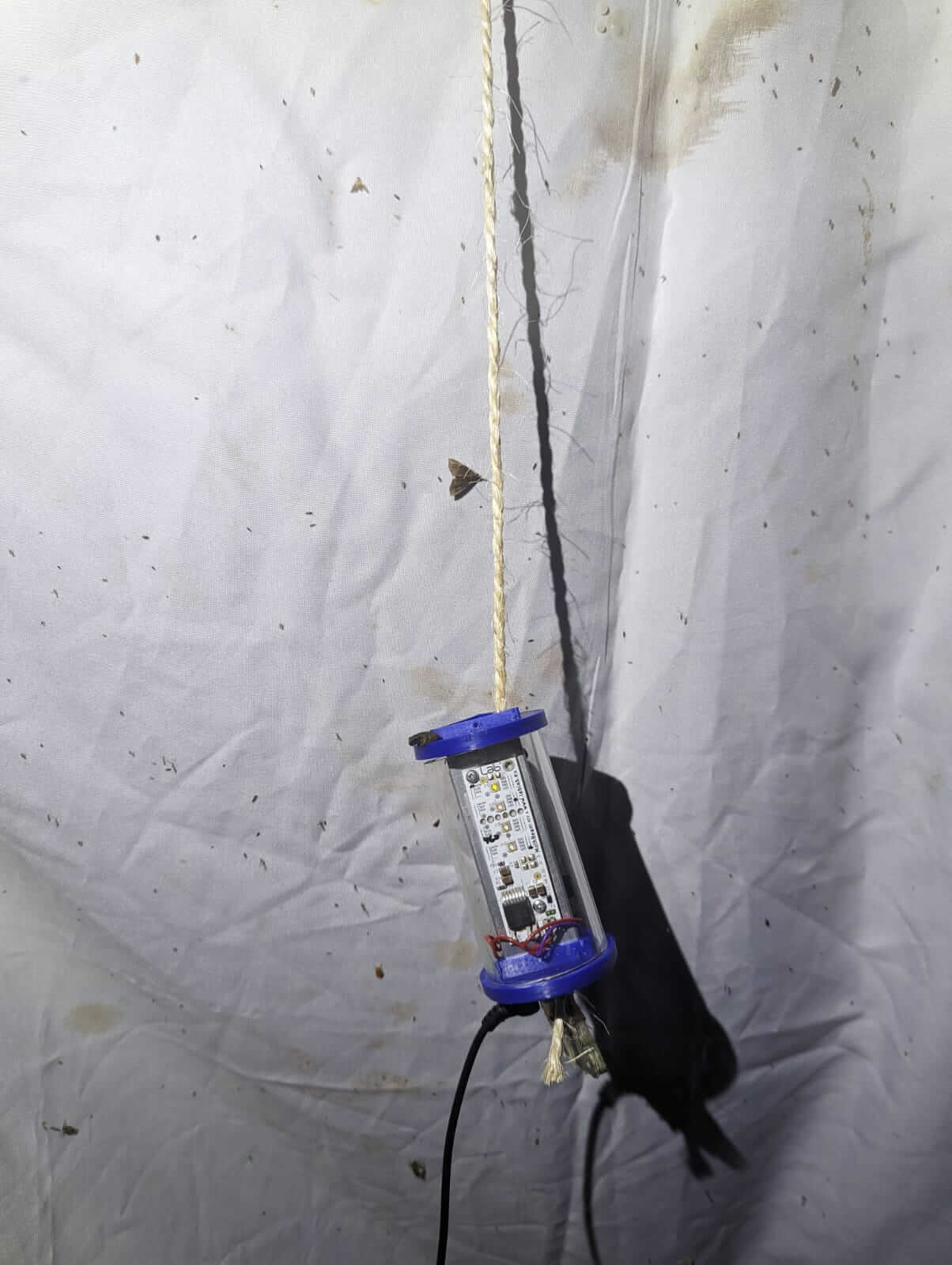
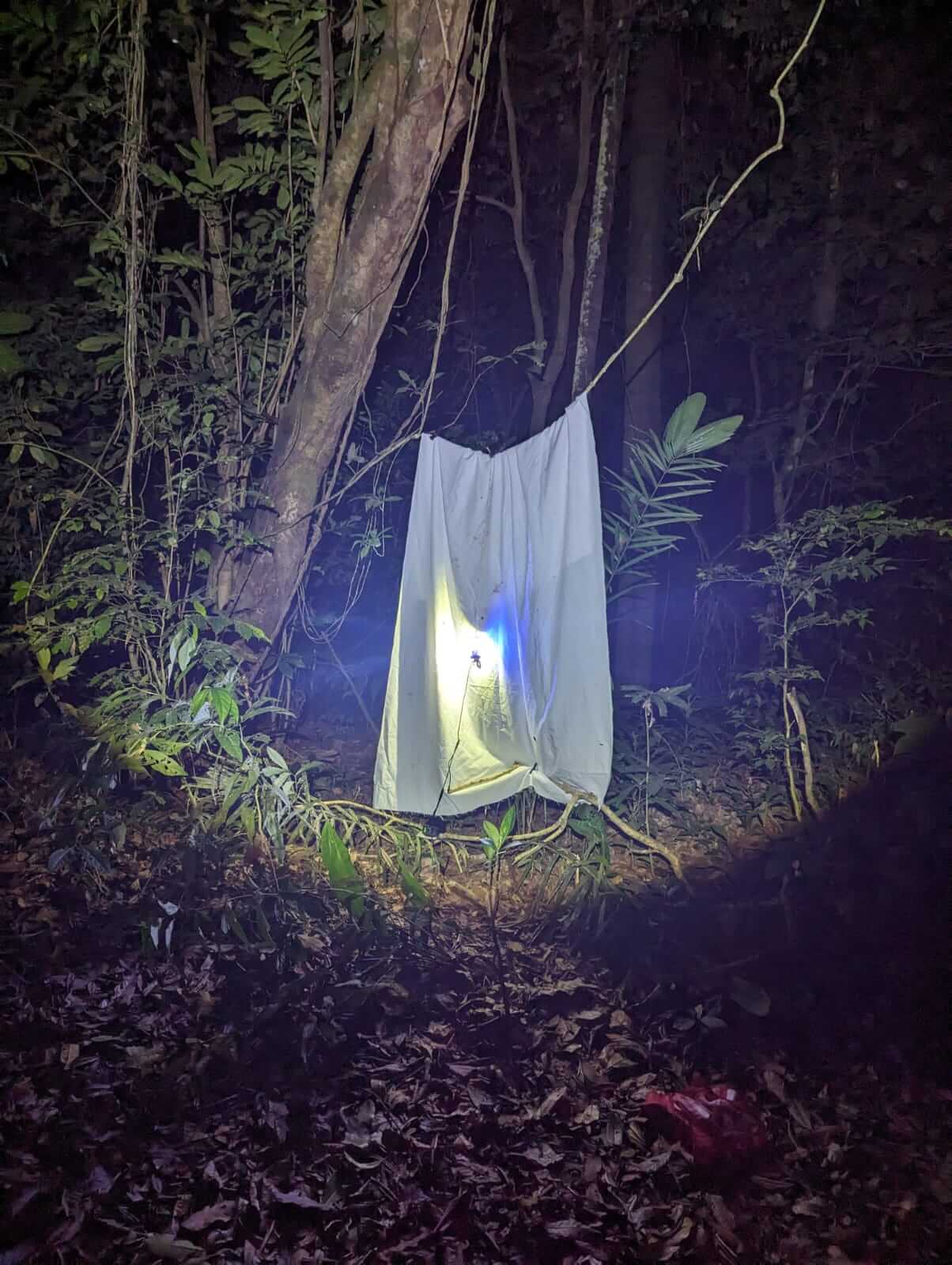
and some nocturnal bees
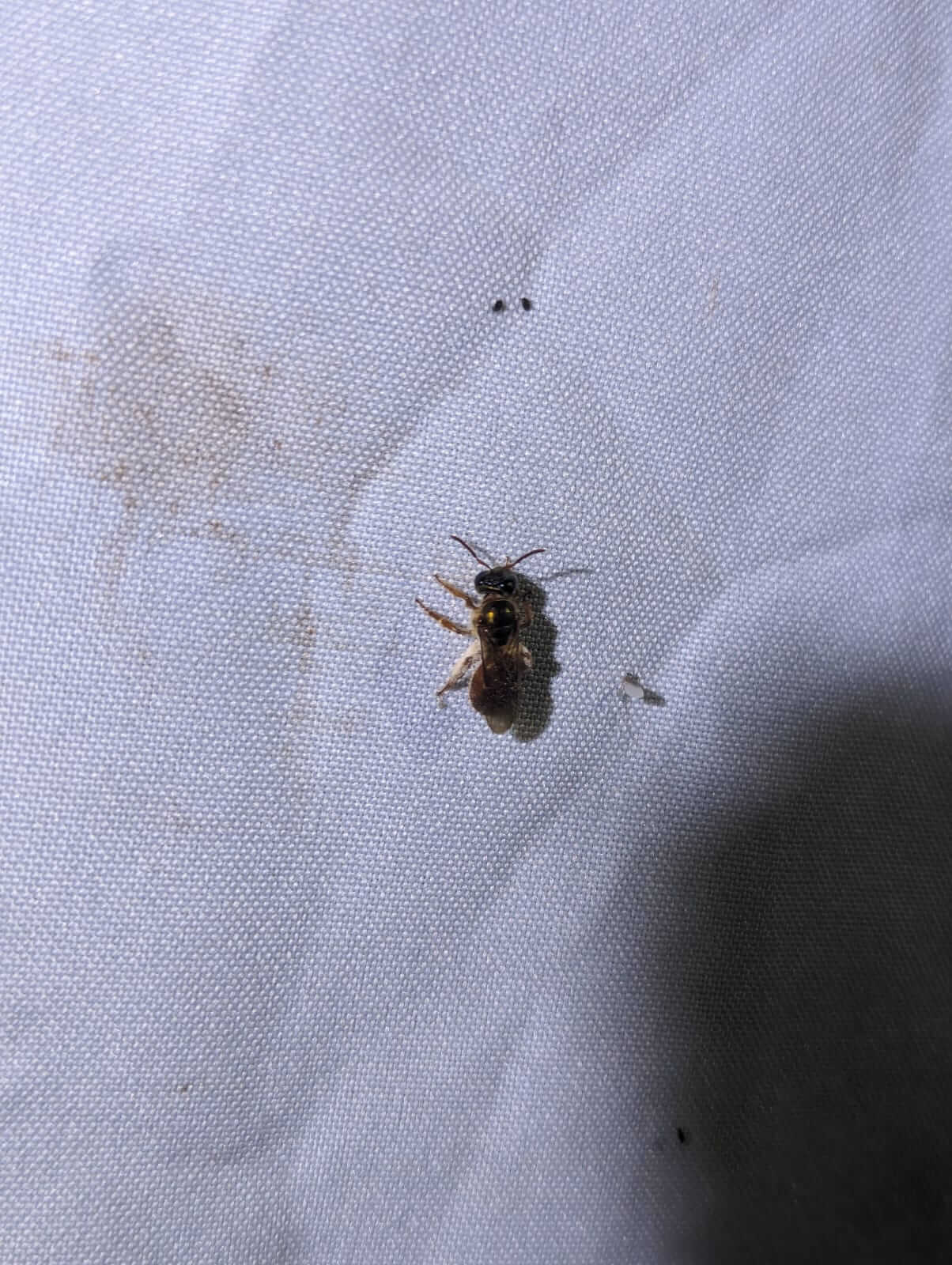
you could also see the mothbeam's aura from far away in the forest! so that was impressive!

I also tested out attaching a 12V USB booster cable to the Mothbeam, and it works
nice! So you can attach regular USB 5V battery packs to the mothbeam as well!
Seeking doctoral student to Join Move.inFormation research group for Andean condor biologging
12 February 2024 8:01pm
Program Officer - Bioacoustics, WILDLABS
22 January 2024 9:37pm
Update 3: Cheap Automated Mothbox
31 December 2023 9:37pm
1 January 2024 9:18pm
This looks amazing! I'm currently work with hastatus bats up in Bocas, it would be really interesting to utilize some of these near foraging sites. Be sure to post again when you post the final documentation on github!
Also, Gamboa......dang I miss that little slice of heaven...
Super cool work Andrew!
Best,
Travis
5 January 2024 8:56pm
Thanks!!!
10 January 2024 11:33pm
Great work! I very much look forward to trying out the MothBeam light. That's going to be a huge help in making moth monitoring more accessible.
And well done digging into the picamera2 library to reduce the amount of time the light needs to be on while taking a photo. That is a super annoying issue!
Grant for AI for biodiversity workshops (Latin America-Germany cooperations)
16 December 2023 6:27am
19 December 2023 2:55pm
Sustainable land managment
15 December 2023 3:38pm
Update 2: Cheap Automated Mothbox
23 October 2023 8:32pm
24 October 2023 9:05am
Hi Andrew,
thanks for sharing your development process so openly, that's really cool and boosts creative thinking also for the readers! :)
Regarding a solution for Raspberry Pi power management: we are using the PiJuice Zero pHAT in combination with a Raspberry Pi Zero 2 W in our insect camera trap. There are also other versions available, e.g. for RPi 4 (more info: PiJuice GitHub). From my experience the PiJuice works mostly great and is super easy to install and set up. Downsides are the price and the lack of further software updates/development. It would be really interesting if you could compare one of their HATs to the products from Waveshare. Another possible solution would be a product from UUGear. I have the Witty Pi 4 L3V7 lying around, but couldn't really test and compare it to the PiJuice HAT yet.
Is there a reason why you are using the Raspberry Pi 4? From what I understand about your use case, the RPi Zero 2 W or even RPi Zero should give enough computing power and require a lot less power. Also they are smaller and would be easier to integrate in your box (and generate less heat).
I'm excited for the next updates to see in which direction you will be moving forward with your Mothbox!
Best,
Max
25 October 2023 6:21pm
Thanks for these tips!
We are using a RPI4 because the people I am building it for want images from the 64MP camera from Arducam and so we have to use that to make that work.
27 October 2023 6:44am
Thanks a lot for this detailed update on your project! It looks great!
Cheap Automated Mothbox
31 August 2023 10:19pm
25 October 2023 5:04pm
I'm looking into writing a sketch for the esp32-cam that can detect pixel changes and take a photo, wish me luck.
25 October 2023 5:11pm
One question, does it even need motion detection? What about taking a photo every 5 seconds and sorting the photos afterwards?
25 October 2023 6:23pm
It depends on which scientists you talk to. I am an favor of just doing a timelapse and doing a post-processing sort afterwards. There's not much reason i can see for such motion fidelity. For the box i am making we are doing exactly that, though maybe a photo every minute or so
Osa Conservation: A Multi-Tech Toolbox of Solutions
22 June 2023 10:42am
Indigenous groups working with camera traps in Latin America
19 April 2023 10:53pm
21 April 2023 1:27pm
Hello,
Happy to put you in contact with some of my grantees working in Mexico who have extensive experience in capacity building for indigenous communities focused in species monitoring, including: Eco-Creando Soluciones, AC, Bosque Antiguo, AC, Bioconciencia, AC. Let me know.
Best,
Amanda
21 April 2023 2:23pm
I've heard that Alianza Ceibo and Amazon Frontlines use camera traps in the Amazonian regions of Ecuador, Colombia, and Peru to monitor poaching and land encroachment. You can reach out to them directly or I can put you in touch with one of their program managers if you'd like (I only have her # and don't want to post her personal info directly on here though).
21 April 2023 8:22pm
Great, thank you both! I'll follow up for introductions/ contact info
Skylight | LATAM & Caribbean Partner Relationship Manager
10 March 2023 5:21pm
Whats de best open source methane analyzer for soil?
21 October 2022 3:36pm
Mangrove soundscape
27 August 2022 4:57pm
29 August 2022 2:47pm
You might check out the devices listed in the Conservation Tech Directory - you can search for 'acoustic recorder' or 'ARU' or something like that.
The most common off-the-shelf models (other than Frontier Labs' BARLTs mentioned above😊) are Open Acoustic Devices Audiomoths & Hydromoths (which may be particularly useful for you since they come in completely watertight cases that can be stuck underwater for deployments), Wildlife Acoustics' SongMeter series, and Cornell Lab of Ornithology's Swift units.
30 August 2022 10:10pm
Camilo--
Are you interested only in airborne sounds or do you want to deploy hydrophones? That decision would inform a lot of other decisions about your purchase of equipment, as would having a clearer picture of your budget.
23 September 2022 5:39pm
Hi there Camilo,
What an interesting project! If you are looking for a lower cost, but effective tools for acoustic monitoring you might want to look into two options:
SoundTraps - are very commonly used and perform quite well:
SonarPoints - these are also a great instrument option:
page/sonarpoint | Desert Star Systems
The SonarPoint system is the third generation of Desert Stars passive underwater acoustics monitoring toolkits.
Movement Ecology Field Team and Data Coordinator: Osa Conservation [Open until filled)
22 September 2022 11:55pm
Consultancy - Development and implementation of SMART for Sao Tome and Principe
31 August 2022 5:24pm















































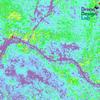





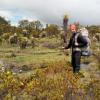


7 October 2024 4:41pm
I applied already 2 times, rejected 1st, now waiting from another youth led organizations.